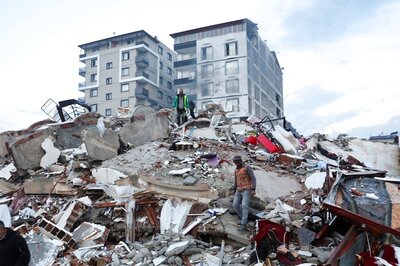
views
MADRID: After securing a generous portion of European Union recovery funds for the coronavirus crisis, Spain faces an unlikely problem — how to make use of all the money, government sources told Reuters.
“This is not a crisis of dough (money), it is a crisis of ideas,” one of the sources said, referring to concrete investment projects to help the economy out of a record recession.
In a country that has not managed to approve a full-year budget since 2016 because of a prolonged political paralysis, the need to suddenly absorb extra cash is a challenge, said the sources.
Spain has been hit particularly badly by the pandemic. It has recorded more than 640,000 COVID-19 cases, the highest number in Western Europe, and the disease has killed more than 30,000.
The economy slumped 18.5% in the second quarter, a contraction exceeded in Europe only by Britain.
To help Spain recover, it will receive around 140 billion euros ($166 billion) in grants and loans out of the EU 750-billion-euro coronavirus recovery package.
That includes 43 billion euros in grants in the next two years alone – equivalent to about 8% of annual expenditure.
“Spending that money is not easy,” a second government source said. Four sources close to the management of the funds said there were concerns and some anxiety about how to set up the machinery to take on this amount of liquidity.
Another source with direct knowledge of the management of the funds said the main projects to receive the funds had already been earmarked and that Spain would certainly comply with deadlines and requirements imposed by Brussels.
SANCHEZ’S OFFICE SUPERVISING IMPLEMENTATION
The European Commission has recommended EU governments spend money from the recovery package on green energy, transport and investment in digitalisation.
Prime Minister Pedro Sanchez, who fought hard at an EU summit in July for the recovery fund to be approved, has put his office in charge of supervising the implementation of the recovery plan, with an advisory group made up of corporate executives to be set up, another source said.
Economy Minister Nadia Calvino is also closely involved as she is finalising a reform plan to be presented to Brussels by Oct. 15, which must outline the main projects eligible for the EU money.
“Right now the challenge is how the money that arrives will be fully applied, and there will have to be projects with a lot of absorption (investment take-up),” said Jose Moises Martin, director of Red2Red consultancy that caters to public authorities.
Aside from the recovery funds, Brussels has approved a 21 billion euro soft loan for Spain to finance employment support schemes, which should alleviate pressure on the Treasury, which has been borrowing for months for this purpose.
A source close to the budget ministry said revenues had recently been better than expected, and September debt issuance has slowed down from the previous months.
But on Wednesday the central bank cut its 2021 growth forecast to 4.1%-7.3%.
Its chief economist, Oscar Arce, said that under the best-case scenario, EU funds could boost medium-term GDP growth by two percentage points, but success would hinge on choosing the right investment projects.
($1 = 0.8447 euros)
Disclaimer: This post has been auto-published from an agency feed without any modifications to the text and has not been reviewed by an editor


















Comments
0 comment